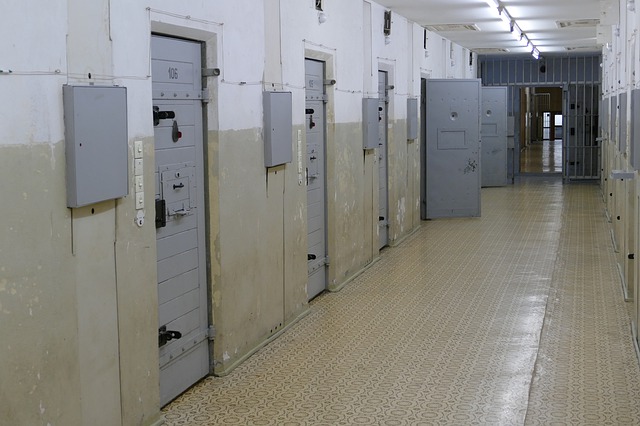I recently finished Melanie Mitchell’s Complexity: A Guided Tour. One of the insights I gained from reading the book was the concept of an idea model. She defined an idea model as follows:
“Relatively simple models meant to gain insights into a general concept without the necessity of making detailed predictions about any specific system.”
She then turned the reader’s attention to different examples of idea models, one of which was the prisoner’s dilemma. I must admit I never thought of the prisoner’s dilemma as a model. Mitchell writes “The Prisoner’s Dilemma and variants of it have long been studied as idea models that embody the essence of the cooperation problem.” Thus, the general concept explored with the Prisoner’s Dilemma is cooperation.
I must admit that I always had trouble seeing the Prisoner’s Dilemma in the context of cooperation, since the dominant strategy in this dilemma is not to cooperate. In the chapter on cooperation and negotiation of the textbook that I co-authored, I used the standard example of two persons who were arrested because they were in the possession of stolen goods.
You know the story: They were brought back to the police station, put in separate rooms, not able to communicate and were given the choice: either rat on your mate or do the time that comes with possession of stolen goods. The pay-off matrix of both, let’s call them Jane and Frank, typically looks like this:

We use this matrix to assess what the dominant strategy of both players is: to rat or not to rat. You probably went over this a thousand times, but for the sake of the narrative: When Jane decides to rat, her worst outcome is 3 years in prison. Should she decide not to rat, the worst outcome is 5 years in prison. The same goes for Frank. It all depends on the level of trust between the two of them, since the best outcome for the collective, Jane and Frank, is doing both one year in prison. But that means not to rat…
Mitchell shared the story of Robert Axelrod, a political scientist who extensively studied the Prisoner’s Dilemma. He was particularly interested in how cooperation would come about without an effective (global) government. Axelrod believed he could use the Prisoner’s Dilemma as an idea model, to explore if cooperation would come about. By this he meant that cooperative strategies must, over time, receive higher payoffs than noncooperative ones. In order to explore this further, he organized two Prisoner’s Dilemma tournaments.
He asked participants to program a strategy for playing the Prisoner’s Dilemma, and then had these computer programs play repeated Prisoner’s Dilemma games against each other.
The computer programs would have algorithms built in that would tell the program whether to rat or not to rat – or, in more friendly terms, whether not to cooperate or to cooperate. Although it was not clearly described in the book, I assume that both programs could only react to the behaviour of their opponent in previous games, since the Prisoner’s Dilemma does not allow for communication during a game. The algorithm would either be self-binding, based only on the choice made by the programmer, not by the action of the other player, or it could be based on the previous action, or actions, of the other player.
It turned out that the programs that were ‘nice’, that is the ones that were never the first one to defect, achieved the highest overall payoffs. Now, I must admit that I had a little difficulty with this description of ‘nice’, since the winner of both tournaments was the simple tit-for-tat algorithm. This comes across like an eye for an eye, a tooth for a tooth, and that quote did never appeal much to me when it comes to solving disputes.
Although I am all in for cooperation, the Prisoner’s Dilemma presents me with a new dilemma. The best outcome for the collective Jane and Frank is to cooperate, with a total prison sentence of 2 years, divided equally between them. However for the larger society, the preferred outcome might have been the non-cooperative outcome, with a total prison sentence of 6 years. It depends on your beliefs about social rehabilitation through prison time. But to circumvent this new dilemma, I’d rather put another example before you. That of low wage countries that have to decide on a living wage.
To define a living wage I quote The Global Living Wage Coalition:
“The remuneration received for a standard workweek by a worker in a particular place sufficient to afford a decent standard of living for the worker and her or his family. Elements of a decent standard of living include food, water, housing, education, health care, transportation, clothing, and other essential needs including provision for unexpected events.”
The living wage has been in the media mainly in relation to the fashion industry. That is why it will not come as a surprise that Asian labour organisations formed an alliance across garment producing countries (such as India, Indonesia, Sri Lanka, Cambodia, Bangladesh) and consumer regions (USA and Europe) to address income levels in the garment industry. To this end the Asia Floor Wage Alliance (AFWA) was founded in 2007. They went so far as to calculate a living floor wage in purchasing power parity (PPP), to guarantee equal living wages across countries. Their idea is that if all low wage countries in Asia commit to the Asia Floor Wage, they will lift themselves from the Prisoner’s Dilemma they find themselves in.
The dilemma is, that if one country unilaterally decides to implement a living wage, the country’s competitive position will deteriorate. This is the main reason countries say they cannot commit to a living wage. We can illustrate this with a, imaginary, payoff matrix of two low wage countries, thus simplifying the issue to two countries:

I assumed if both do nothing, nothing changes, hence the (0,0) payoff in the first row-first column of the payoffs. When they both commit to a living wage, this would not change the volume of garments produced in each country, since I assume their relative wages would not change. They both would gain, however, since the price of garments would likely increase because of the wage increase, and this would result in a higher revenue. Should one choose a living wage, while the other does not, then production is likely going to shift from the living wage country to the non living wage country, or, this is what the countries involved say they believe. I assumed not all production would be lost to the country, and higher prices would alleviate part of the decrease in foreign exchange available to the country. But this would not help workers now without a job – and a wage – much. Which is the other argument often used not to implement a living wage.
You probably see the Prisoner’s Dilemma unfold in this example. When country B decides not to implement a living wage, its worst outcome is no change at all. Should it decide to implement a living wage, the worst outcome is a decrease in revenue, and subsequently foreign exchange, of -1. The same goes for country A. Now we can wait for a tit-for-tat strategy to unfold, but then one country has to make the first move.
The Asia Floor Wage Alliance is working towards a commitment of all parties involved to implement – and respect – a living wage. This would remove the dilemma. It does however put forth a new question: what will the effect be on the garment industry in developing countries in the long run? To give you some idea on the dynamics, read this blog on Make it British.
henny@21steconomics.org – You can also find me on LinkedIn




